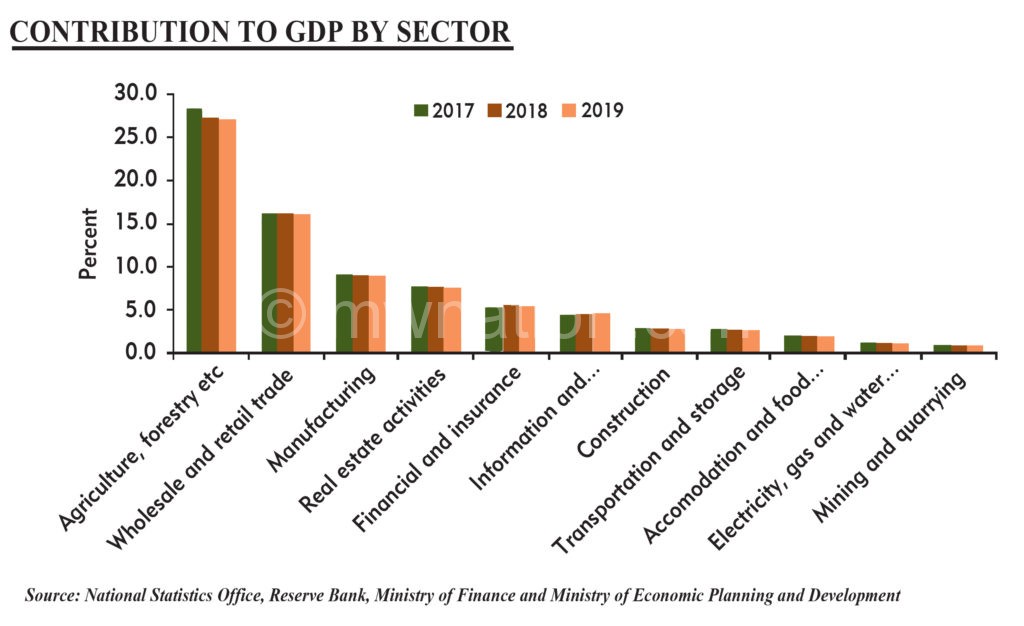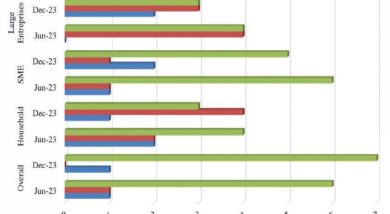World bank cuts growth to 4.5%
The World Bank has slashed Malawi’s gross domestic product (GDP) growth rate for 2019 to 4.5 percent from 4.7 percent largely due to the impact of floods that affected the country in March this year.
The revision comes six months after the bank projected a 4.7 percent growth in January while the International Monetary Fund (IMF) had put Malawi’s growth projection at five percent from an earlier projection of 4.1 percent.

On the other hand, the Malawi Govenment put its ambitious growth projection at seven percent.
In its June 2019 Global Economic Prospects titled Heightened Tensions, Subdued Investment published on Tuesday, the Bretton Woods institution said the downward revision is due to severe strains from tropical Cyclone Idai that took a heavy human toll and caused severe damage to social and economic infrastructure in the country.
The World Bank, however, hopes that reconstruction efforts from the cyclone impact will support activity over the next two years.
In his accompanying press statement, World Bank Group president David Malpass said sub-Saharan African countries, including Malawi, need to make significant structural reforms to improve the business climate and attract investment.
“Stronger economic growth is essential to reducing poverty and improving living standards.
“Current economic momentum remains weak, while heightened debt levels and subdued investment growth in developing economies are holding countries back from achieving their potential,” he said.
Malawi Confederation of Chambers of Commerce and Industry (MCCCI) chief executive officer Chancellor Kaferapanjira, in an interview yesterday, said at 4.5 percent growth rate, there is nothing encouraging for businesses to grow, arguing that the projection presents structural challenges that are not being worked on.
“The 4.5 percent is a bare minimum for us, but also an indication of challenges we have in our business environment. This means nothing to the industry.
“We should have been growing by six percent annually for businesses to expand but now this offers nothing new encouraging for businesses to grow. We need government intervention but in the right direction,” he said.
In an interview, Economics Association of Malawi (Ecama) executive director Maleka Thula said with the economic growth rate averaging around four percent in the past five years or so, it is highly unlikely that Malawi can attain middle income country status.
“Data suggest that it may take Malawi around 40 years to attain that status if our current growth at an average of four percent is anything to go by.
“We can fast-track ourselves to a middle-income country if we enhance our investment which is currently below the average of sub-Saharan Africa,” he said.
On his part, Lilongwe-based economist Salim Mapila said the drop in GDP is likely strain the economy which relies largely on agriculture.
He said this will strain efforts to improve livelihoods.
Ministry of Agriculture, Irrigation and Water Development Principal Secretary Grey Nyandule-Phiri ealier said floods will not have a bigger negative impact on crop production because they happened when crops had reached maturity stage and that some of the crops were just submerged in water, meaning people will still harvest.
In the report, the World Bank has also cast down on low income countries, including Malawi graduating into middle income status, arguing they face steeper challenges to achieving similar progress.
Figures from the 2018 Malawi Annual Economic Report indicate that agriculture sector contributes 27.2 percent to GDP while crop and animal production, hunting and related service activities; wholesale and retail trade; manufacturing; real estate activities and forestry and logging each contribute 18.5 percent, 16.2 percent, 9.1 percent, 7.6 percent and 7.1, respectively.
This year, government is projecting the economy to grow by seven percent, largely banking on good rains to achieve the ambitious projection.
But with the World Bank forecast, the country’s actual growth will likely be lower than the seven percent projected.
Government annual economic reports from 2011 to 2017 indicate that in that period, Treasury had been revising downwards growth projections, with the years 2013 to 2014 having positive revisions.
Last year, Treasury also revised downwards the 2017 and 2018 growth projections to an average of four and 4.5 percent, respectively, from the initial 6.4 percent and six percent.




